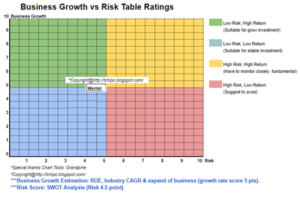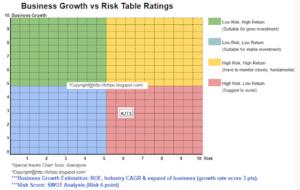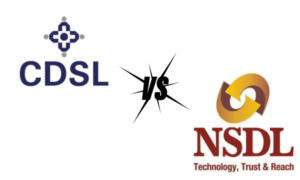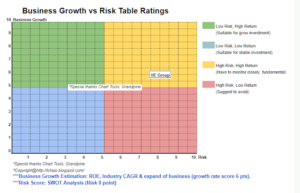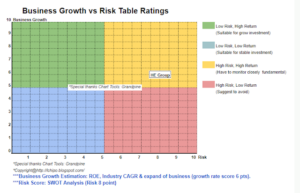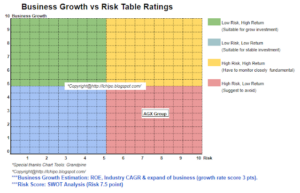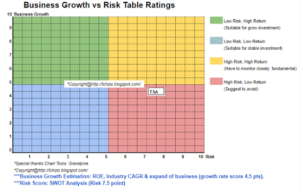Registry Direct is a software
business that provides share registry services to publicly listed and private
companies. This includes keeping track of shareholders, facilitating the
issuance of new capital, convening shareholder meetings and providing meeting
minutes, share raising information and other required communications to shareholders.
Registry Direct aims to provide low cost registry services to smaller
privately-owned companies than have typically been ignored by the established share registry
companies. The maximum raise is 6 million, with a post raise market cap of 20.5
million.
business that provides share registry services to publicly listed and private
companies. This includes keeping track of shareholders, facilitating the
issuance of new capital, convening shareholder meetings and providing meeting
minutes, share raising information and other required communications to shareholders.
Registry Direct aims to provide low cost registry services to smaller
privately-owned companies than have typically been ignored by the established share registry
companies. The maximum raise is 6 million, with a post raise market cap of 20.5
million.
Founder
One of the main things I look at when evaluating the
IPO’s of new companies is the strength of the Managing Director/CEO and how long they have been involved in the business. It was a key factor in why I invested in both
Oliver’s and Bigtincan, and why I passed on Croplogic. Registry Direct’s
founder is a guy called Steuart Roe. Steuart has been a key figure in the
Australian investing world for years. He was involved in launching the first
Exchange Traded Fund on the ASX back in 2001, and more recently was the manager
of Aurora Funds Management from 2010 to 2014. It is his time at Aurora Funds
Management that may potentially be a concern for some investors. Aurora Funds
Management was created when three separate funds management companies were
merged in 2010. One of the funds that was part of the merger was a fund founded
by Steart called Sandringham Capital, and Steuart became the Managing Director of
Aurora Funds management upon the new funds creation.
IPO’s of new companies is the strength of the Managing Director/CEO and how long they have been involved in the business. It was a key factor in why I invested in both
Oliver’s and Bigtincan, and why I passed on Croplogic. Registry Direct’s
founder is a guy called Steuart Roe. Steuart has been a key figure in the
Australian investing world for years. He was involved in launching the first
Exchange Traded Fund on the ASX back in 2001, and more recently was the manager
of Aurora Funds Management from 2010 to 2014. It is his time at Aurora Funds
Management that may potentially be a concern for some investors. Aurora Funds
Management was created when three separate funds management companies were
merged in 2010. One of the funds that was part of the merger was a fund founded
by Steart called Sandringham Capital, and Steuart became the Managing Director of
Aurora Funds management upon the new funds creation.
Without going too much into the details, the fund
performed poorly, and Steuart Roe left the business in 2014. This article has
some insight into the problems as does
this hot copper thread where someone from registry direct actually turns up to
give Steuart’s side of the story.
performed poorly, and Steuart Roe left the business in 2014. This article has
some insight into the problems as does
this hot copper thread where someone from registry direct actually turns up to
give Steuart’s side of the story.
Having spent some time reading through all of this,
it seems Aurora’s problems were caused by a few unlucky investment decisions
rather than incompetence or mis-management. As a result, I don’t see how this
should have any negative impact on how this IPO is evaluated. On the other
hand, the experience and connections Steuart must have picked up in his time
running investment funds seem to make him uniquely qualified to lead a successful share registry business. If you look at how quickly Registry
Direct has grown since the business began in 2012 a lot of this has to be down
to Steuart’s connections and experience enabling him to both design a product
that fund managers and company owners would like, and have the connections to
sell if effectively. Post listing Steuart will own just under 50% of Registry
Direct’s stock and will continue in his current role as managing director. And
all in all, I see his significant stock holdings and continued presence in the
company as a significant bonus for this IPO.
it seems Aurora’s problems were caused by a few unlucky investment decisions
rather than incompetence or mis-management. As a result, I don’t see how this
should have any negative impact on how this IPO is evaluated. On the other
hand, the experience and connections Steuart must have picked up in his time
running investment funds seem to make him uniquely qualified to lead a successful share registry business. If you look at how quickly Registry
Direct has grown since the business began in 2012 a lot of this has to be down
to Steuart’s connections and experience enabling him to both design a product
that fund managers and company owners would like, and have the connections to
sell if effectively. Post listing Steuart will own just under 50% of Registry
Direct’s stock and will continue in his current role as managing director. And
all in all, I see his significant stock holdings and continued presence in the
company as a significant bonus for this IPO.
Financials
Registry Direct are one of the few companies I’ve
reviewed whose only pro forma adjustments actually reduce net profit.
reviewed whose only pro forma adjustments actually reduce net profit.
Below are the unadjusted audited figures for the
last three years:
last three years:
Whereas the figures once pro forma adjustments have been made are here:
The rationale behind the reduction in revenue is that Registry
Direct received consulting fees unrelated to the share registry business in
2015 and 2016 of $377,167 and $555,224 respectively that have been excluded from the pro forma figures. Interestingly enough,
these fees came from Steuart’s old company Aurora Funds Management (Aurora
Funds Management was renamed SIV Asset Management in 2016). While Steuart
stepped down from his Managing Director position in 2014, he only resigned from
the board of SIV Asset Management in June 2017. It would be interesting to hear
what shareholders of SIV Asset Management think about the company shelling out
over $900,000 to a company owned by one of its directors – but that is a topic
for another day.
Direct received consulting fees unrelated to the share registry business in
2015 and 2016 of $377,167 and $555,224 respectively that have been excluded from the pro forma figures. Interestingly enough,
these fees came from Steuart’s old company Aurora Funds Management (Aurora
Funds Management was renamed SIV Asset Management in 2016). While Steuart
stepped down from his Managing Director position in 2014, he only resigned from
the board of SIV Asset Management in June 2017. It would be interesting to hear
what shareholders of SIV Asset Management think about the company shelling out
over $900,000 to a company owned by one of its directors – but that is a topic
for another day.
There can often be a real lag in
revenue growth for software companies in early years, with every dollar of
revenue dwarfed by massive investments in software development. That Registry
Direct managed to grow its revenue so quickly is impressive, as is the fact the
company managed to achieve profitability in 2015 and 2016, even if it was only
due to the somewhat suspect related party consulting fees.
revenue growth for software companies in early years, with every dollar of
revenue dwarfed by massive investments in software development. That Registry
Direct managed to grow its revenue so quickly is impressive, as is the fact the
company managed to achieve profitability in 2015 and 2016, even if it was only
due to the somewhat suspect related party consulting fees.
Industry and strategy
The Share Registry market seems to be a
relatively healthy industry, with good growth potential and profitability. Computershare and Link, the two biggest
companies in this sector in Australia grew their profits by 68% and 101%
respectively over the last financial year. As mentioned at the start of this post, Registry Direct intends to diverge from these companies by providing
cheaper registry services to a larger number of smaller privately-owned
companies. The prospectus uses the below table to present Registry Direct’s proposed fee structure.
relatively healthy industry, with good growth potential and profitability. Computershare and Link, the two biggest
companies in this sector in Australia grew their profits by 68% and 101%
respectively over the last financial year. As mentioned at the start of this post, Registry Direct intends to diverge from these companies by providing
cheaper registry services to a larger number of smaller privately-owned
companies. The prospectus uses the below table to present Registry Direct’s proposed fee structure.
The prospectus also indicates they intend
to drive this growth by allowing accountants lawyers and other professionals to
sell “white label” versions of the Registry Direct software. From an outside
perspective at least, this makes a lot of sense. If Registry Direct can offer
simplified registry services through a standard software package, increasing
customer numbers by allowing accountants and other professionals to sell
Registry Direct’s software on their behalf seems like a logical way to increase
revenue without hiring a large salesforce. This strategy should be further buoyed
by the Turnbull government’s recent legislation changes regarding crowdfunding
in Australia. These changes make it much easier for unlisted companies to raise
money from the public, which should result in a dramatic increase in the number
of private companies looking for cheap registry services.
to drive this growth by allowing accountants lawyers and other professionals to
sell “white label” versions of the Registry Direct software. From an outside
perspective at least, this makes a lot of sense. If Registry Direct can offer
simplified registry services through a standard software package, increasing
customer numbers by allowing accountants and other professionals to sell
Registry Direct’s software on their behalf seems like a logical way to increase
revenue without hiring a large salesforce. This strategy should be further buoyed
by the Turnbull government’s recent legislation changes regarding crowdfunding
in Australia. These changes make it much easier for unlisted companies to raise
money from the public, which should result in a dramatic increase in the number
of private companies looking for cheap registry services.
Despite how promising this all sounds,
it should be noted that at the date of the Prospectus, Registry Direct only had
60 share registry clients and its two largest registry clients made up over
$400,000 of the companies FY17 revenue. It seems that last year at least,
Registry Direct was still operating more like a typical share registry
business, providing tailored services to a smaller number of high paying
customers. This pivot to a larger number of lower cost clients may be good in
theory, but it is worth remembering that at this stage it is more of a plan
than current business operations.
it should be noted that at the date of the Prospectus, Registry Direct only had
60 share registry clients and its two largest registry clients made up over
$400,000 of the companies FY17 revenue. It seems that last year at least,
Registry Direct was still operating more like a typical share registry
business, providing tailored services to a smaller number of high paying
customers. This pivot to a larger number of lower cost clients may be good in
theory, but it is worth remembering that at this stage it is more of a plan
than current business operations.
Valuation and Verdict
At only $648,000 of FY17 revenue vs a
market cap of 20.5 million, this IPO is a little more expensive than I would
prefer. Market cap divided by revenue is a troubling 31.7, vs 6.6 for
Bigtincan, a Software IPO I invested in earlier this year. However, considering
the company was only founded in 2012 and just how quickly revenue has grown
over the last few years, I feel that this expensive price is at least somewhat
justified.
At only $648,000 of FY17 revenue vs a
market cap of 20.5 million, this IPO is a little more expensive than I would
prefer. Market cap divided by revenue is a troubling 31.7, vs 6.6 for
Bigtincan, a Software IPO I invested in earlier this year. However, considering
the company was only founded in 2012 and just how quickly revenue has grown
over the last few years, I feel that this expensive price is at least somewhat
justified.
Overall, the main thing that makes me willing to overlook this high valuation is how confident I feel that Registry Direct will be successful. The
company has demonstrated that it can grow revenue quickly, has recorded
profitability in previous years, and is led by an impressively well
connected and experienced Managing Director. What’s more, the company is
operating in what seems to already be a relatively profitable industry that
is likely to see an explosion of demand thanks to the Turnbull governments
legislation changes. While I would be happier if the price was a little lower, for these reasons Registry Direct will be my fourth IPO
investment since starting this blog.
company has demonstrated that it can grow revenue quickly, has recorded
profitability in previous years, and is led by an impressively well
connected and experienced Managing Director. What’s more, the company is
operating in what seems to already be a relatively profitable industry that
is likely to see an explosion of demand thanks to the Turnbull governments
legislation changes. While I would be happier if the price was a little lower, for these reasons Registry Direct will be my fourth IPO
investment since starting this blog.
Source: http://theiporeview.blogspot.com/2017/10/registry-direct.html
- asset
- asset management
- Aurora
- Australia
- Biggest
- Blog
- board
- BP
- business
- business operations
- capital
- caused
- clients
- Communications
- Companies
- company
- Connections
- consulting
- continue
- Crowdfunding
- Current
- Customers
- day
- Demand
- Design
- Development
- Director
- Dollar
- Early
- exchange
- Fees
- Figure
- financial
- First
- founder
- fund
- funds
- good
- Governments
- Grow
- Growth
- here
- High
- Hiring
- How
- HTTPS
- Impact
- Increase
- industry
- information
- investing
- investment
- Investments
- Investors
- involved
- IPO
- issuance
- IT
- keeping
- Key
- large
- Lawyers
- lead
- Led
- Legislation
- LINK
- listing
- Long
- management
- Market
- Market Cap
- meetings
- million
- money
- net
- New Funds
- numbers
- offer
- operating
- Operations
- Other
- owners
- perspective
- Pivot
- present
- price
- private
- Pro
- Product
- professionals
- Profit
- profitability
- public
- raise
- Reading
- reasons
- reduce
- revenue
- running
- salesforce
- sell
- sense
- Services
- Share
- shareholder
- So
- Software
- software development
- Stage
- start
- stock
- Strategy
- successful
- time
- track
- Valuation
- world
- worth
- year
- years




